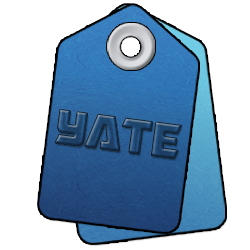For years now I’ve been maintaining a database which describes the albums I own. I did this because at times I purchased the same album a number of times. It was also useful to sort my albums by acquisition date so I could easily find my recent stuff to listen to. (I buy a lot of albums).
I’ve been so busy with Yate that the quality of my database has started to suffer. I purchased an application whose sole purpose is to maintain music collections for about $50. While the app has some nice features it is primarily oriented towards CD collections and at this point my collection is all ripped or purchased digitally. I figured it would take me about ten years to manually enter my data into the app.
I realized that all the information I wanted to collect was available in my tracks and could be accessed by Yate. For this reason we’ve added support for Album Databases. Album Databases are stored in CSV files so that they can be displayed on a variety of devices. I take my database with we on all my devices. There are also a wide variety of CSV Viewers/Editors available for Macs, iPads, iPhones, Android devices, etc. Yate uses a sidecar file to contain additional information it can use when displaying the files.
Export sets, also new, are where you describe what fields you would like to export. It also supports additional special fields such as: folder, calculated track count, calculated album duration, lowest rating, average rating and highest rating and tag source.
The Create, Open and Close Album Database action functions are what you use manipulate the databases.
The Create function can be run in batch processing mode and you can even create multiple Album Databases with different content in a single run.
As usual things sort of got out of control. Once we could create and view the files we had to add bi-directional editing between the database and the file list.
The good news is that I no longer have to manually maintain my album database. The bad news is that I have thousands of albums where my ‘acquired date’ information was not stored in the tracks 🙂 I’m now using Yate to save the information to the Purchase Date field. One side effect of the CSV implementation is that Yate can pretty much open any CSV file. I open my exported database and the Yate Album database at the same time. I open albums and use the album database and the file list to edit.
This is a new feature. Let us know if you like it and what you’d like to see added to the functionality.

